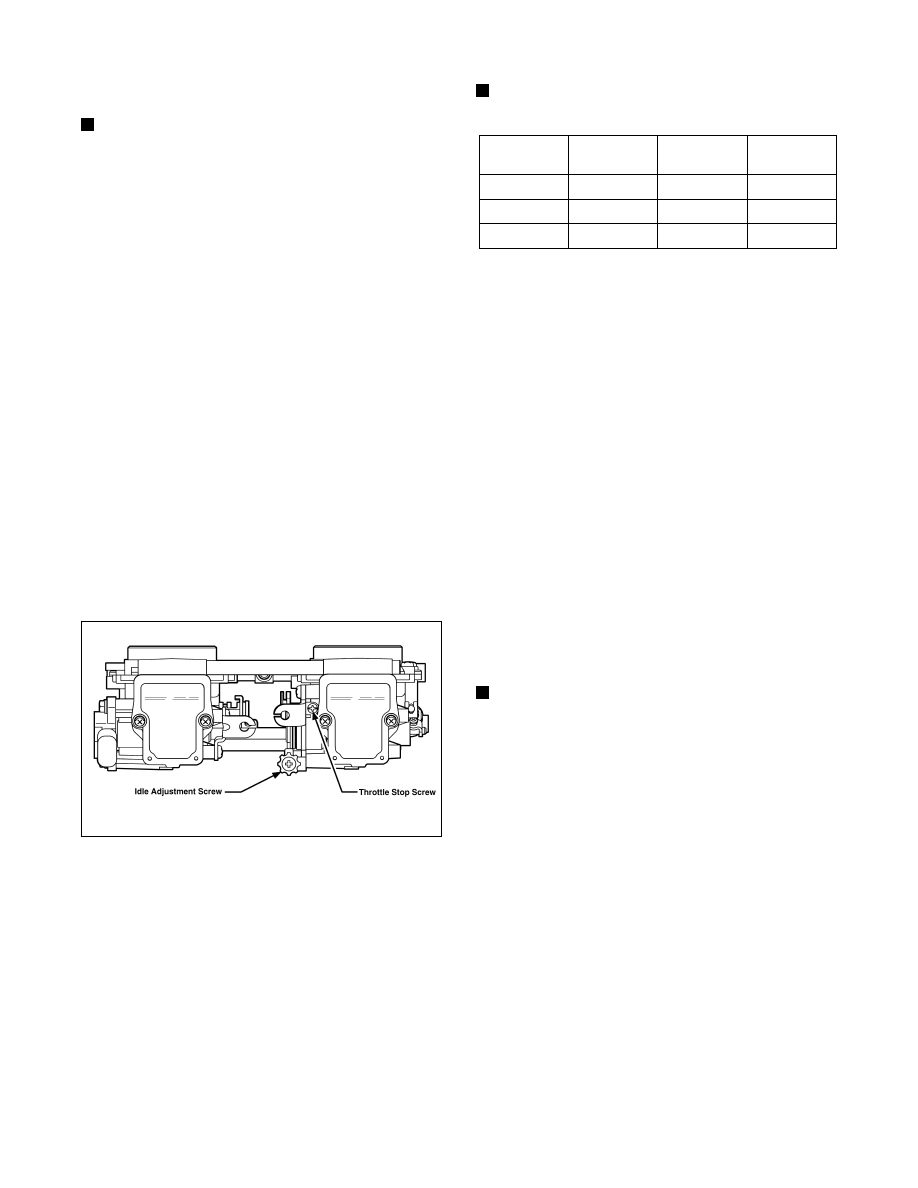Snowmobile Arctic Cat (2000 year). Manual - part 69

ADJUSTING TPS
NOTE: Before using the TPS adjustment tool,
verify its battery condition. The battery used in the
tool is a 9-volt battery.
To check battery condition, use a digital volt/ohmmeter
set on DC volt scale. Test between the adjustment tool
black and red jacks. Insert the red lead of the digital
voltmeter into the green jack of the adjustment tool and
the black lead of the digital voltmeter into the black jack
of the adjustment tool. If voltage is found below 4.9
volts, replace the battery.
1. Loosen the two screws securing the TPS.
2. Using TPS Adjustment Tool (p/n 0644-299),
connect its wiring harness to the TPS. Connect the
two meter leads (red and black) using the two pin
jack adapters provided with the adjustment tool to
the red and black jacks of the TPS adjustment tool.
3. Set the selector to the DC scale. Adjust the TPS to
the specifications in the following chart with the
throttle fully closed; then tighten the two screws
securing the TPS.
4. Squeeze the throttle to the wide-open position. If
the reading is not as specified in the following chart,
adjust the throttle stop screw until the correct
voltage is indicated on the voltmeter.
Fig. 5-9
0734-457
5. Connect the throttle cable to the throttle shaft.
Adjust the throttle cable, if required, so that both the
idle and wide-open positions are obtainable while
working the throttle lever. Keep in mind that there
must be no free-play in the throttle lever in the idle
position.
6. Check the idle voltage using the TPS Adjustment
Tool (p/n 0644-299). Adjust the idle voltage to the
specifications in the following chart using the idle
adjustment screw.
7. Disconnect the adjustment tool harness from the
TPS. Connect the snowmobile TPS harness to the
newly installed or adjusted TPS.
NOTE: Before installing the TPS harness
connector, apply dielectric grease to the connector
pins.
REPLACING TPS
1. Disconnect the throttle cable from the throttle shaft.
2. Turn the idle speed screw counterclockwise until its
end no longer contacts the throttle stop. The throttle
valves should now be completely closed.
3. Disconnect the TPS wiring harness connector.
Remove the two screws securing the TPS to the
right-side carburetor.
4. Install the new TPS and secure with two screws, flat
washers, and lock washers.
FAIL-SAFE IGNITION TIMING
Engines equipped with the 3-D ignition system have a
protective feature called “fail-safe” ignition timing
which prevents engine damage should the TPS fail. If
the TPS does fail, the engine will run normally at low
RPM but will run poorly at high RPM. This will allow
the operator to get the snowmobile to safety with little
or no engine damage.
NOTE: The engine will continue to operate this
way until the TPS is replaced.
WIDE-OPEN POSITION
Engine
Closed
Position
Idle
Position
Wide-Open
Position
700 cc
0.025 V
0.325 V
3.920 V
800 cc
0.300 V
0.600 V
4.012 V
1000 cc
0.300 V
0.600 V
4.012 V
5-22